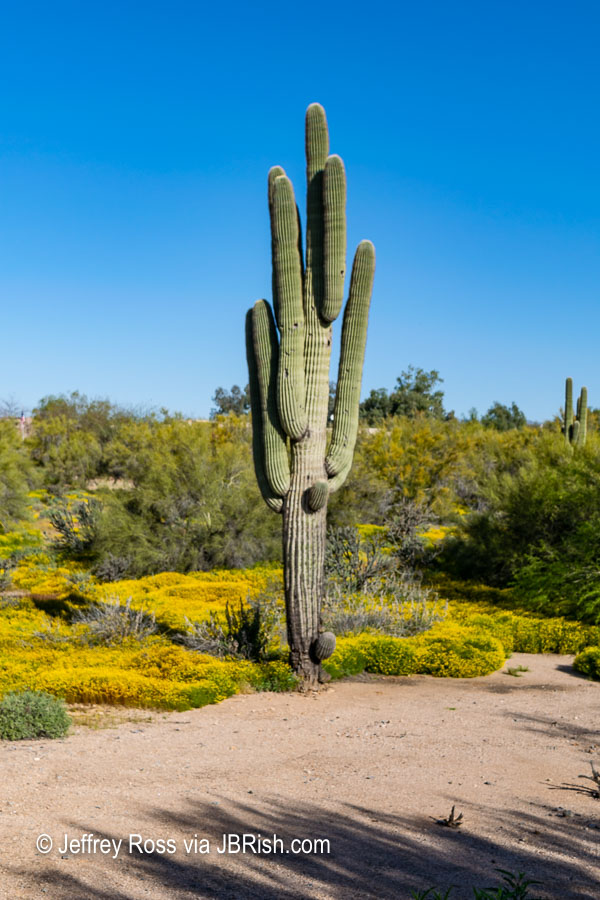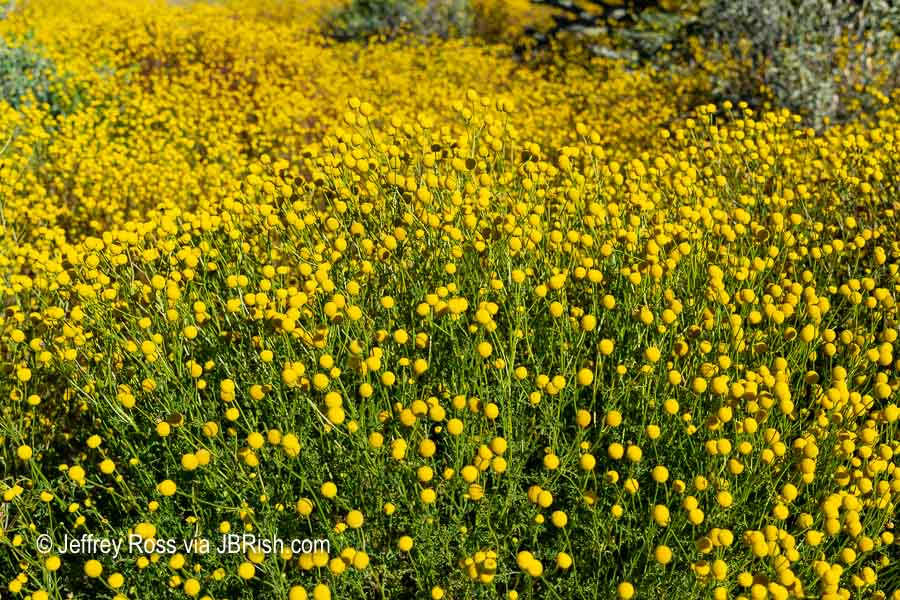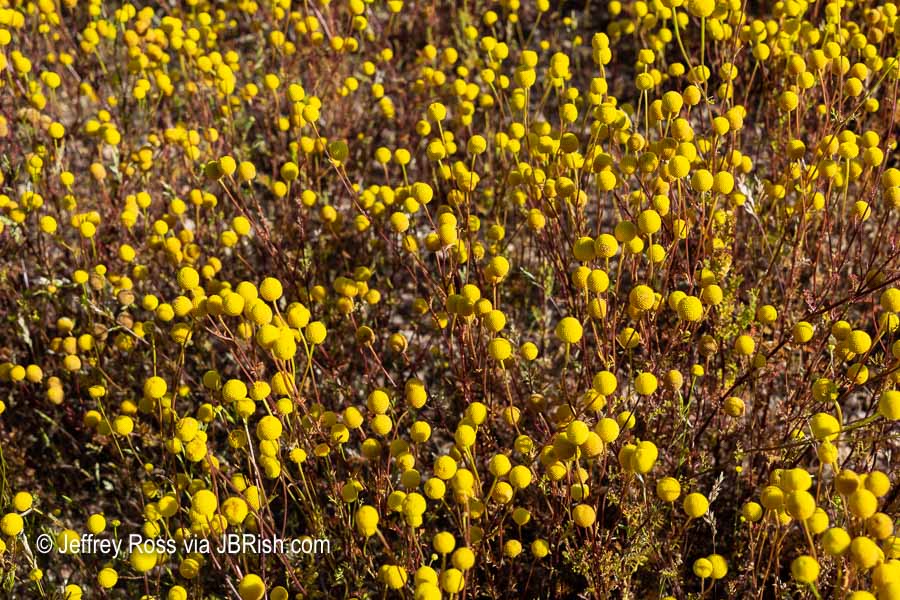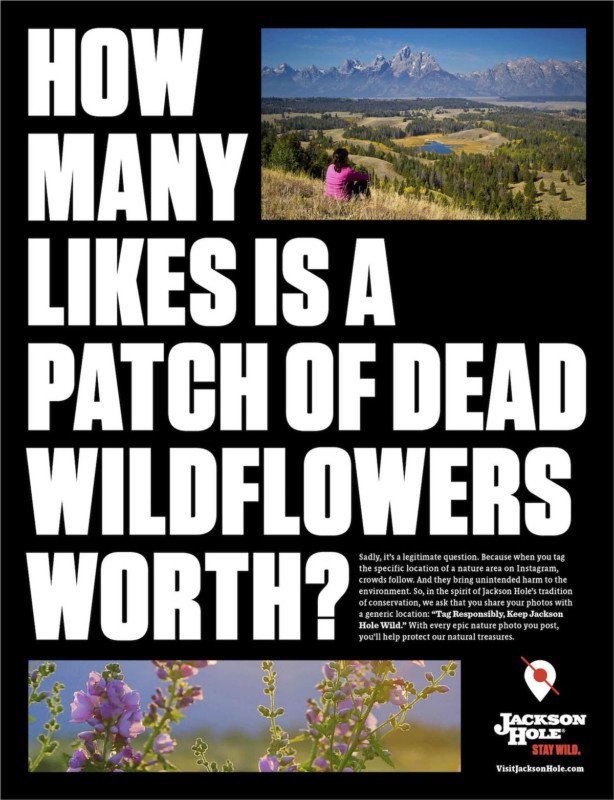Petroglyphs are images scratched into rocks using other rocks or instruments. In the desert, rocks often gather a dark patina that can be chipped away to reveal a lighter surface underneath. These are ideal surfaces for creating petroglyphs.
These drawings are found in many locations around the world. and those created by ancient peoples tend to hold a certain mystique.
NOTE: – Paintings on rocks are referred to as pictographs or petrographs.
Some Petroglyphs are relatively recent, perhaps as young as the early twentieth century while others are tens of thousands of years old.
During our many hikes across the United States, we have seen a number of established petroglyph sites.
One of the most interesting encounters was Newspaper Rock State Historic Monument in Utah which can be found along the main road leading into the Needles section of Canyonlands National Park.
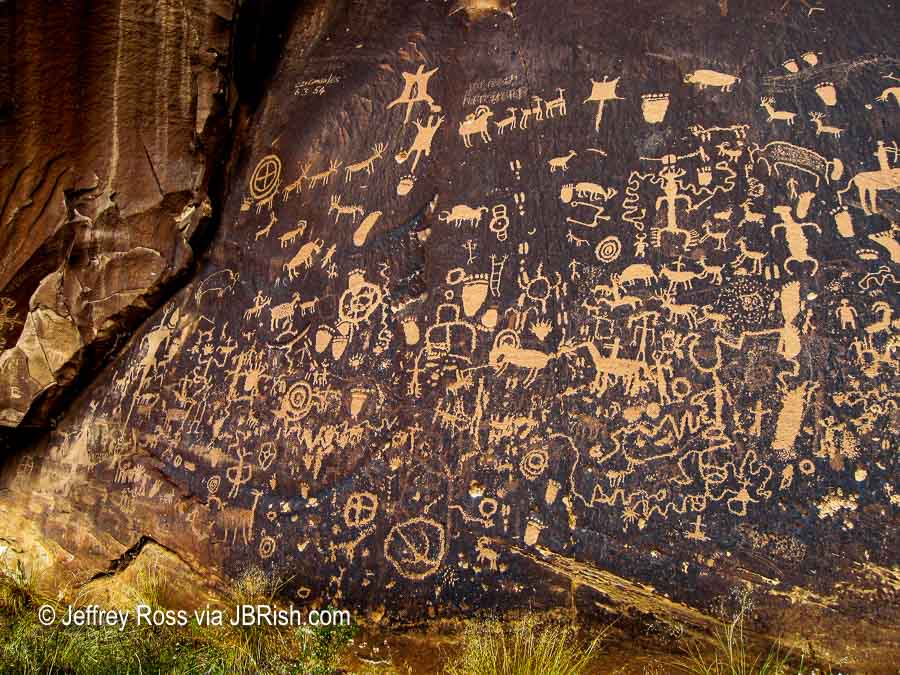
The photo above was of the left-hand side of the main display. A number of the images are self-explanatory while others remain mysterious. These are estimated to be 2,000 years old according to the park’s website.
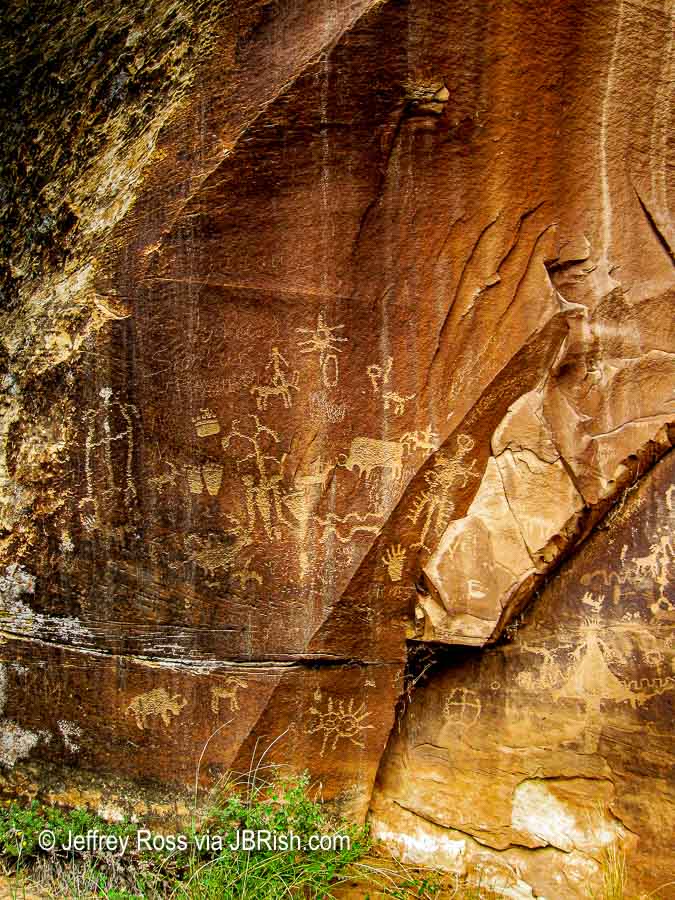
This lighter section was a less “populated” area even farther left of the area shown above. It is amazing how well the petroglyphs have stood the rigors of weather over time. Notice that some drawings such as the feet and the quartered circle are repeated in a number of areas shown in the photographs.
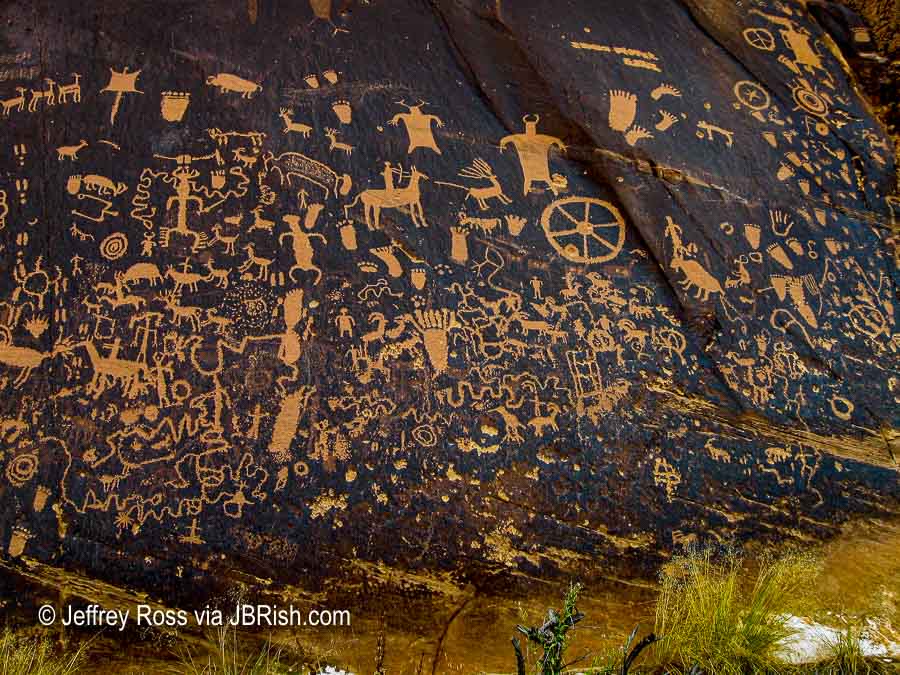
The last section, located on the right-hand side of the monument, is carved on very dark rock. A variety of animals and hunters can clearly be seen.
What I find almost equally astounding is that these images do not seem to have been defaced. There is only a short fence blocking off this ancient canvas which could easily be breeched. Kudos to the thousands of visitors who have admired this precious view into the past and have kept it safe for others to witness.
Read more abut Newspaper Rock HERE
Valley of Fire State Park, Nevada
We were fortunate enough to have time to visit petroglyphs at the Valley of Fire State Park. Although these were not at ground level, a scaffolding was erected to enable easy viewing of the ancient artistry.
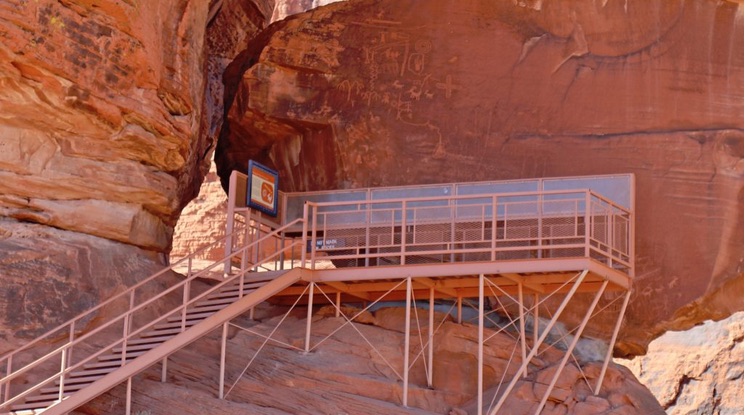
Picture courtesy of Park Ranger John website
A number of the images were similar to those at other sites.
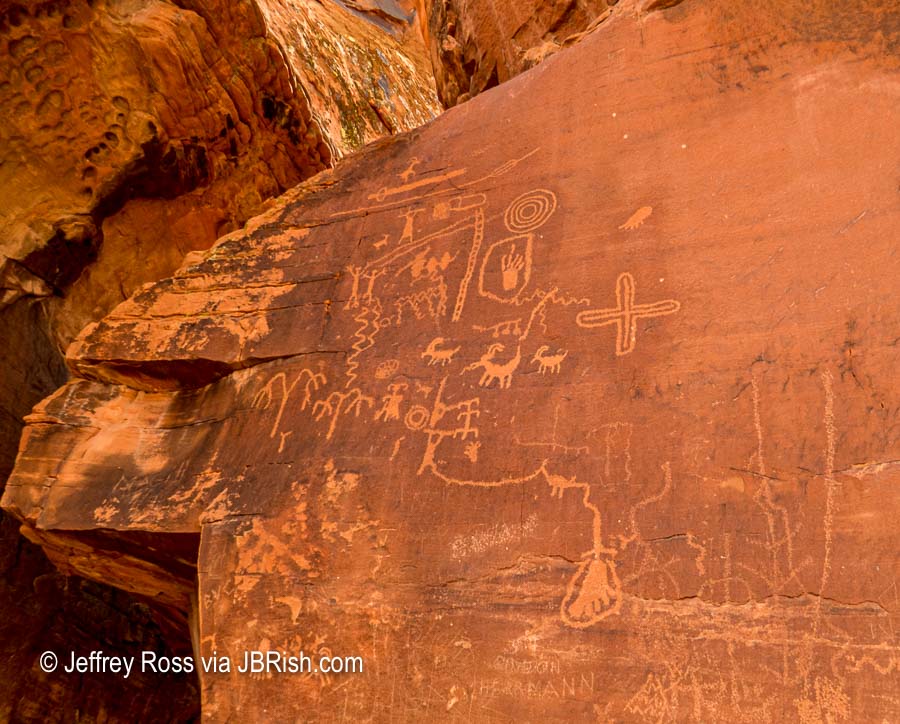
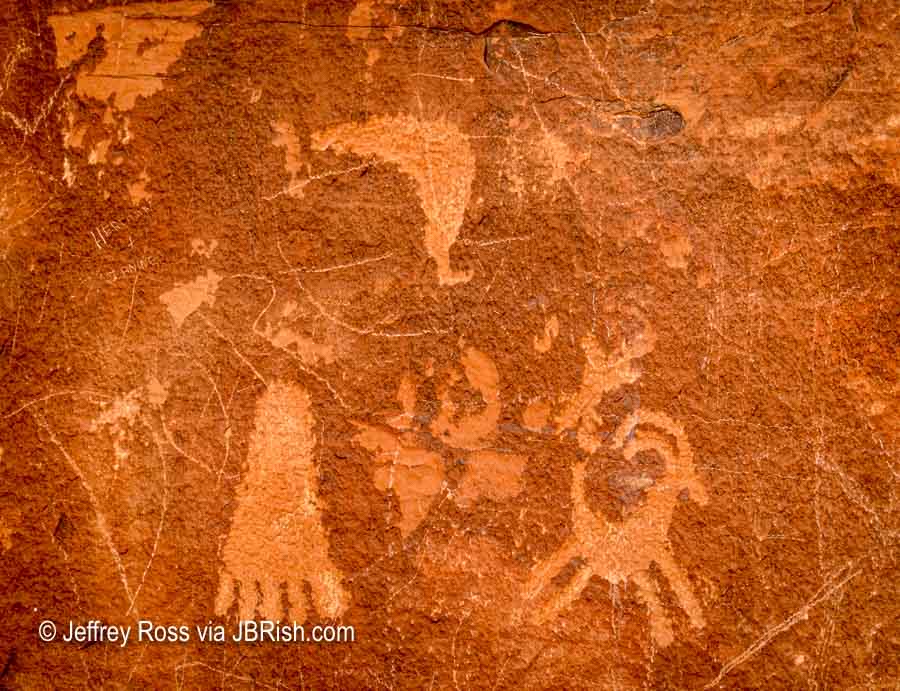
Unfortunately there was some alteration, or more accurately, violation of these ancient treasures, shown in the picture below via the circle.
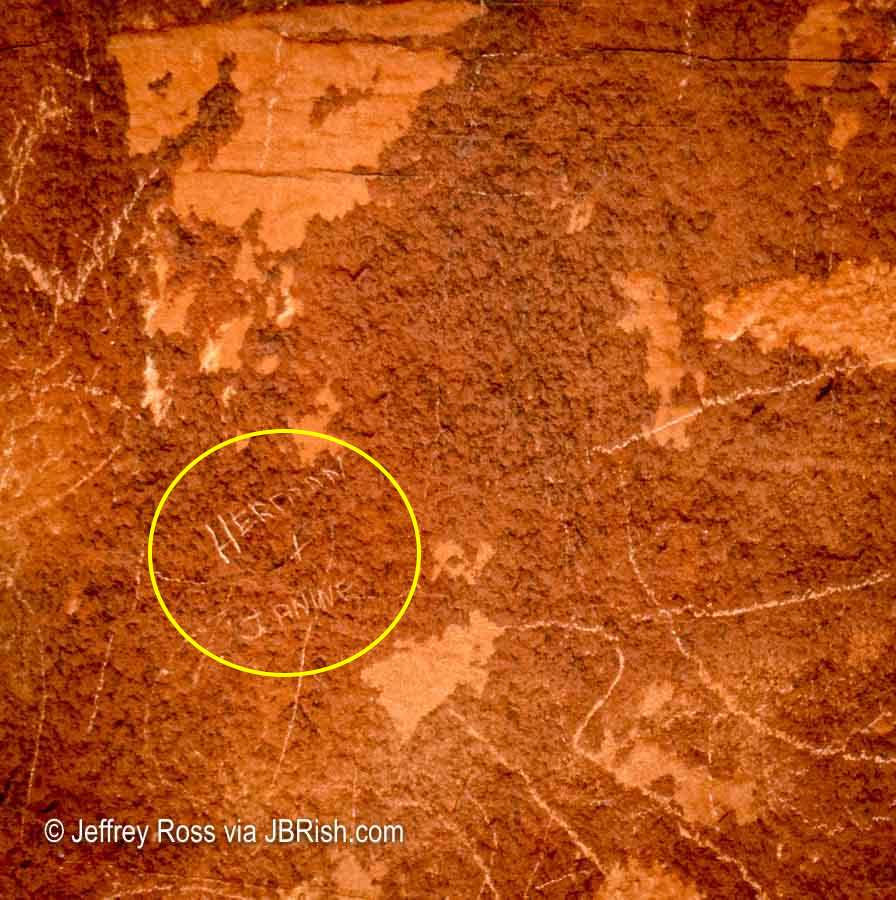
The names Herman and Janine were carved into the face of the large rock.
Painted Desert – Another Rock, Another Newspaper
The Painted Desert also has a Newspaper Rock although it is not as easy to “read” as the Canyonland’s Edition.
The artifacts can be viewed from a fenced-off, elevated area just a short walk from the large parking lot. Don’t expect to get a good picture of the actual drawings unless you have a camera with a fairly large telephoto lens.
This is what you will see from the viewpoint above the rock formation. I have placed yellow arrows where the petroglyphs are located. On a sunny day, there is shade covering much of the surface (obviously depending on the the time of the day) making them difficult to see with the naked eye.
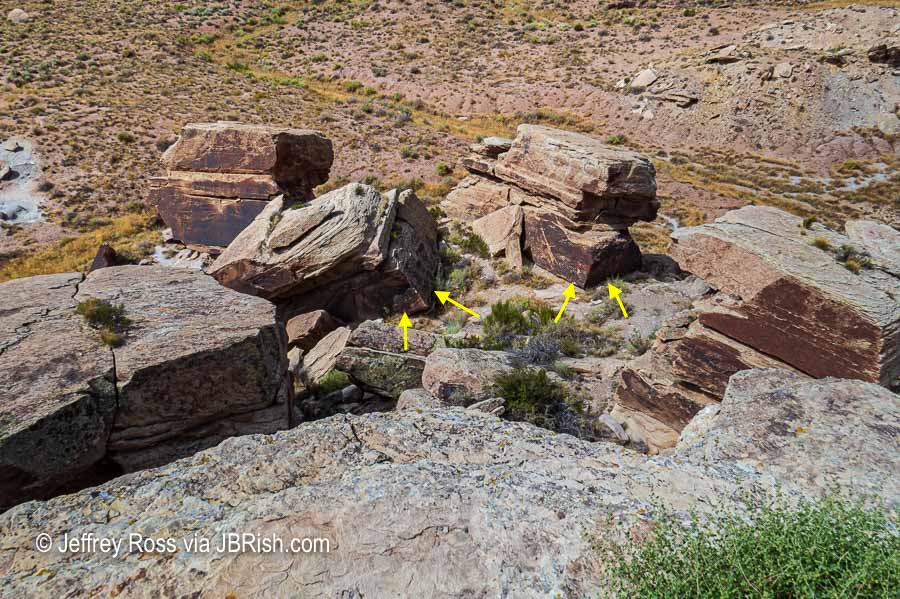
There are free viewing machines (mechanical binoculars) that assist visitors in visualizing some of the drawings. These are not always optimal as dust and dirt on the lenses and loss of definition related to location in such a harsh environment degrades the lenses.
NOTES:
I am not suggesting that people be allowed to approach these ancient treasures and, as demonstrated above, perhaps it is a good thing for their own protection.
The pictures below were not captured with a standard 35mm camera and thus the ranges given are approximately estimated for a full-frame digital camera.
With a telephoto lens ( 80mm +/-), we can get closer…
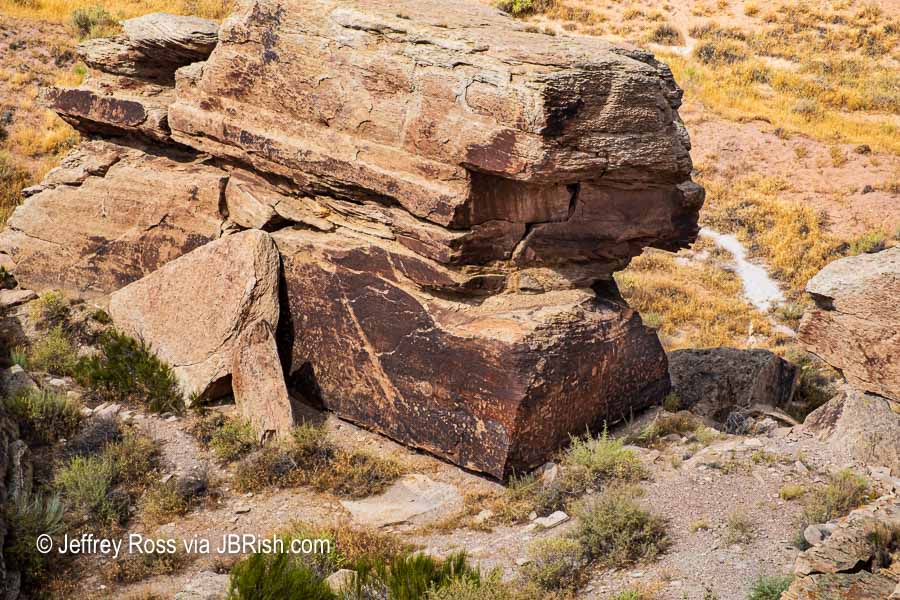

At approximately 300 mm (+/-) the drawings become quite clear:
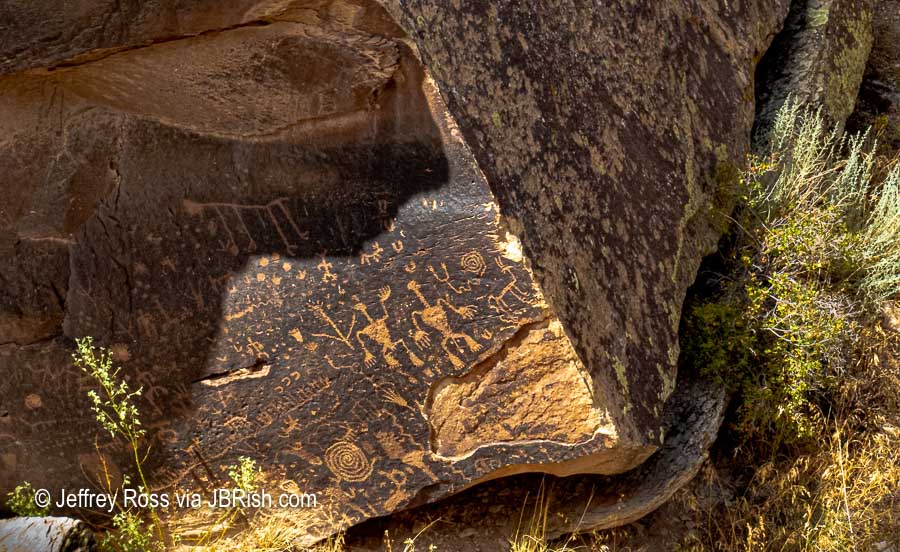
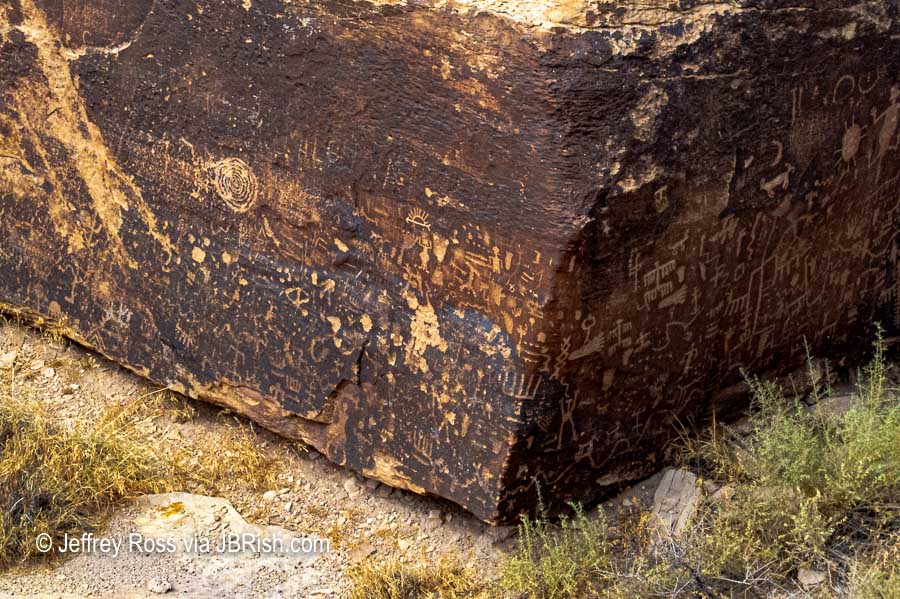
Moving in a bit closer, we can see even more detail.
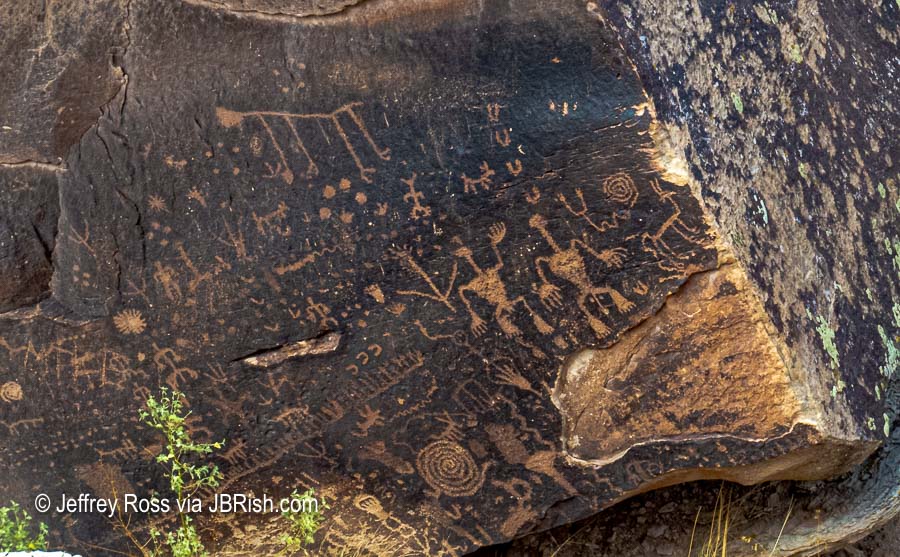
At the maximum length of the crop sensor lens on my canon HS50xs Powershot, we get a closer look, but some detail is blurred.
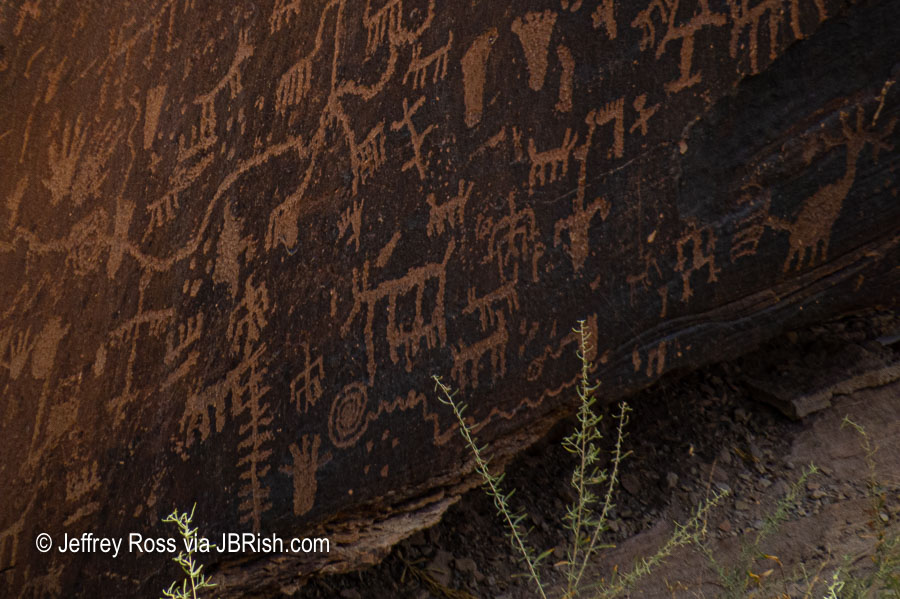
Once again, we see similarity to petroglyphs from other sites.
Tours by the Old Pueblo Archaeology Center are available for some of the petroglyph sites at the Petrified Forest.
Read more about Petroglyphs and Petroglyph National Monument in New Mexico
If you enjoyed this post, you can read more miscellaneous stories on JBRish HERE
**********
All original content on this blog is copyrighted by Jeffrey B. Ross with ALL Rights Reserved. While reference links back to JBRish.com are appreciated and encouraged, please acquire approval for any reproduction of original content from this website.
©Jeffrey B. Ross 2014 – 2019 — JBRish.com
